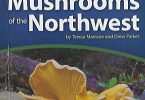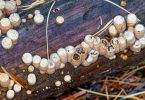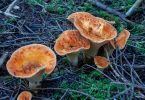Discovered a couple of blood colored droplets on the forest floor recently (featured image). They were positioned below the drip-line of a rotting tree trunk, a conifer. No immediate signs of struggle or bodily remains. Looking closer noticed large growth of polypore (shelf-like fungi) growing on the side of the log above the droplets. I took several photographs of this fungi. Was sure it was a new mushroom species for me.
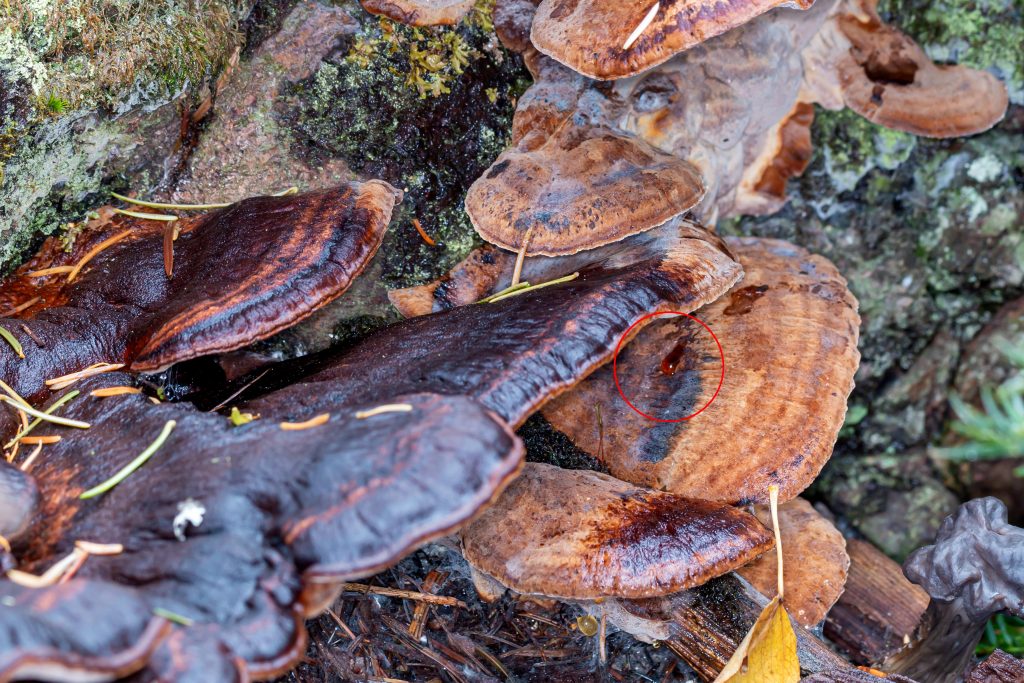
Discovery of Source
Left the area without any determination. At home I went through my various mushroom field guides trying to identify the polypore I photographed. After an extended period of time going back and forth examining other photos and reading species descriptions, I noticed a red droplet on the surface of the photographed mushroom (circled in photo above). That was the source! This clue also led to an identification.
Identification
The description for Resinous Polypore (Ischnoderma resinosum) from Trudell and Ammirati (2009) reads: “When young and actively growing, the fruit body is rather thick and fleshy, contains a sappy substance, and has a whitish, rounded edge, sometimes with liquid droplets…” Further written description combined with multiple images convinced me of correct ID. But, this isn’t the only mushroom that exudes water droplets as a diagnostic feature. This process is called guttation.
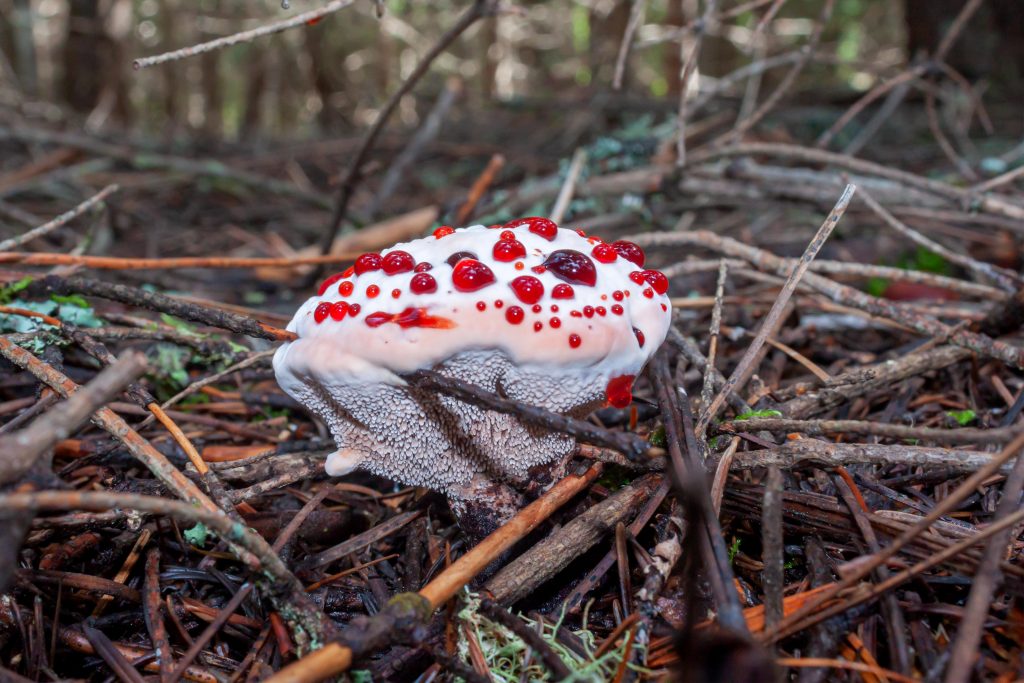
Guttation?
Guttation is defined by Wikipedia as: “the exudation of drops of xylem sap on the tips or edges of leaves of some vascular plants, such as grasses, and a number of fungi”. In a nutshell, water pressure from saturated substrate of soil causes water to enter the plant roots of lower pressure. Water is forced throughout the plant; the pressure is only relieved via special water glands at leaf tips. It isn’t known how this works in fungi. Famously, Strawberries and Cream (Hydnellum peckii) [photo above] is the fungi poster child for exuding colored water droplets. This only occurs early in the growth process. Thereafter the mushroom morphs in age to a generic blackish-brown color. Other fungi exhibit this also, usually less colorfully.
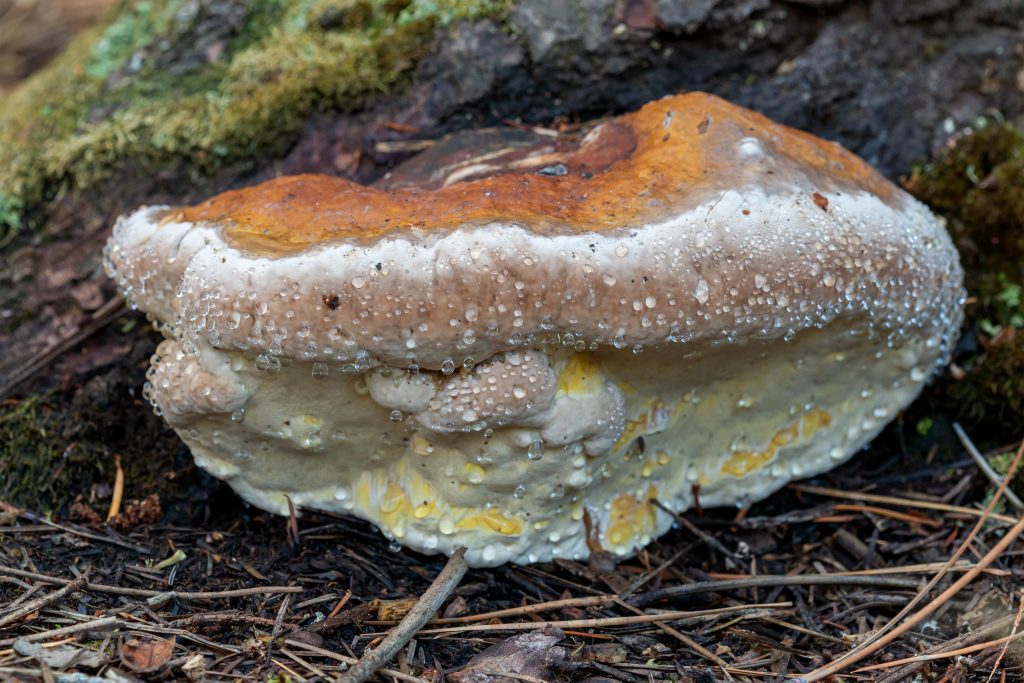
Widespread Example
Red-belt Conk (Fomitopsis pinicola) [photo above] is the best and most widespread fungi example of guttation. It is a large polypore shaped as a rounded shelf and can approach 30 inches in width. This conk is found across North America (McKnight and McKnight 1987) on dead or living hardwood, softwood trees. Active growing specimens (this is a perennial) exude transparent droplets as pictured above.
Jan Thornhill has an excellent post with comprehensive descriptions and images of other fungi exhibiting guttation.
Slimy or Viscid isn’t Guttation
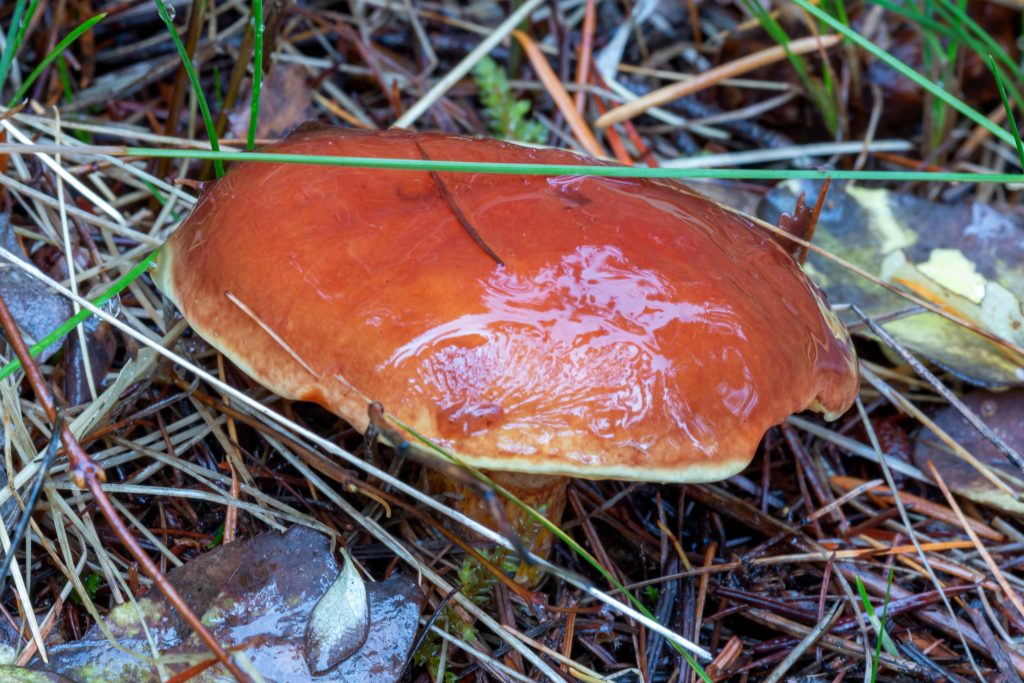
A caveat, a slimy or viscid coating on the cap of a mushroom isn’t associated with guttation. “Slippery Jack” species (photo of one above) are mushrooms of the Suillus genus and are notable for this condition. I have not come across a biological explanation in the literature for why these fungi generate this condition. Suffice it say that Slippery Jacks are common mushrooms near conifers in the cool fall weather. They are medium to large (maybe up to 5 inches in diameter) in size. Here is a tweet posting of four kinds of Slippery Jack from the Pacific Northwest.


